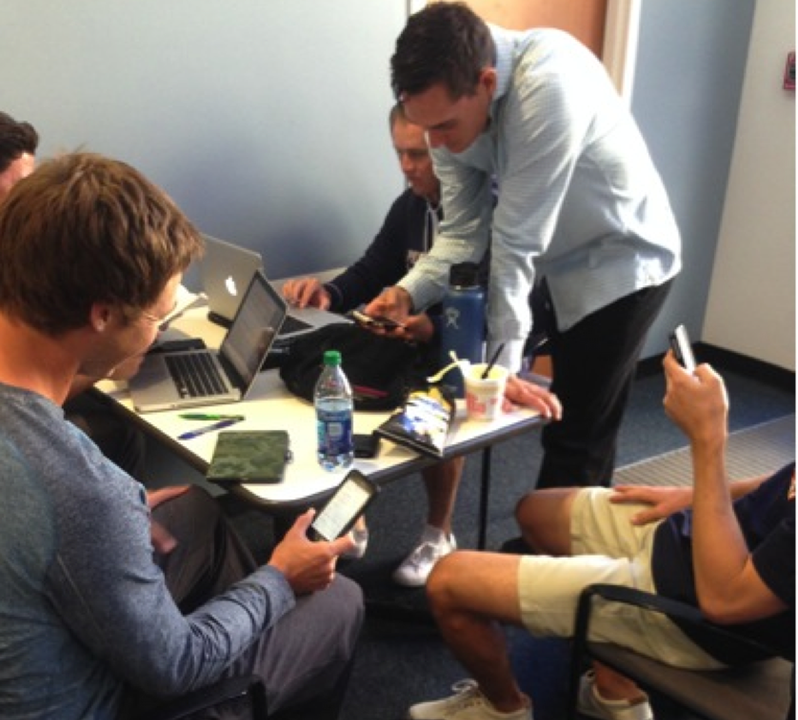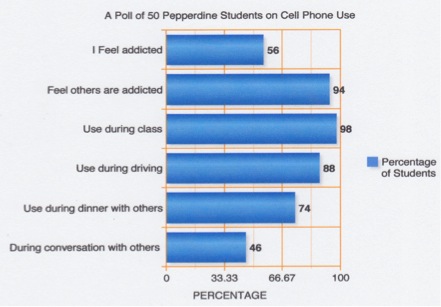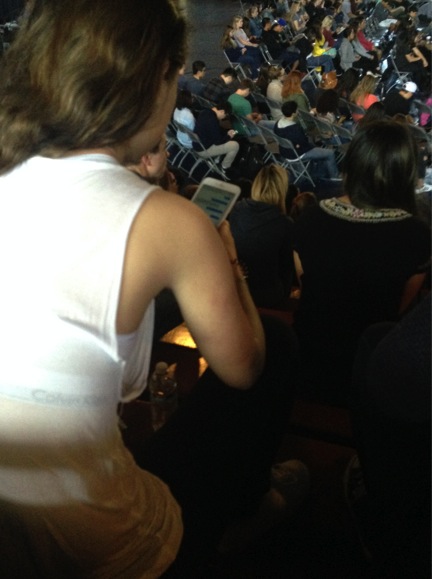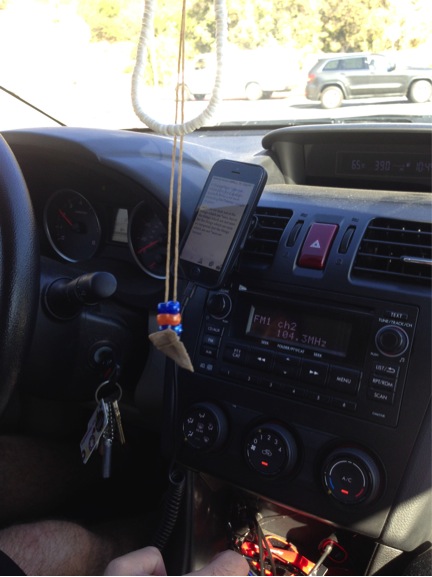
Recent studies show cellphone overuse may have devastating effects on college students.
Male college students spend an average of eight hours each day on their cellphones and female college students spend nearly 10, according to a Baylor University study published in the the “Journal of Behavioral Addictions.” The study indicates that college students may be addicted to their cellphones, with 60 percent of college students believing they are addicted. Cellphone addiction is having negative effects on college students’ academic performance, mental health and driving safety, experts said.
“College students’ reliance on their cellphones is an invisible addiction,” lead researcher James Roberts, who has a doctorate in marketing, said. “Students do not realize just how attached they are to their cellphones. What surprised me the most about the study is the depth of that attachment.”
Roberts said the attachment can be so powerful for some that when their cellphone is misplaced for as little as 20 minutes, signs of cellphone withdrawal may take place.
“We’ve seen the same signs from cellphone addiction withdrawal as you would from the withdrawal of other addictions,” Roberts said. “Tremors and shakes as well as irritability, stress, anxiousness and even desperation can come from misplacing a cell phone for 20 minutes, two hours or heaven forbid, a day or two.”
The study did an online survey of 164 college undergraduates from Baylor University and explored what cellphone activities are most associated with cellphone addiction.
The study found the top four cellphone activities are texting, sending emails, using Facebook and surfing the Internet.
An unscientific poll of 50 Pepperdine students regarding cellphone use found that students say they spend an average of four hours a day on their phones. They check their phones 8.6 times an hour. More than half — 56 percent — believe they are addicted, but 94 percent believe college students in generally are addicted. Nearly all — 98 percent — said they look at their phones in class and 88 percent look at their cellphones when driving. Some 74 percent said they look at their phone while dining with others, though only 46 percent said they look at their phone while in a conversation.

Pepperdine students did not quite match the number of hours the Baylor study reported for daily cellphone use: Four hours per day for all Pepperdine students polled, compared to eight hours for men and almost 10 for women in the Baylor study. One Pepperdine student said on the survey that he checks his phone 25 times per hour, but did not think he was addicted. Another student said she used her phone for less than one hour each day but thought she was addicted.
Chandler Blanchard, a Pepperdine junior majoring in media production, said he uses his phone five to six hours a day, but does not think he is addicted.
“I have gone 24 hours without my cellphone and I was fine,” Blanchard said. “I don’t have to have my phone with me at all times.”
Pepperdine student Austin Bernard, a sophomore majoring in advertising, said he might be addicted to his cellphone.
“I’ve never really thought about how much time I spend on a cellphone,” Bernard said. “I guess I spend at least two or three hours a day. Maybe I am addicted. Some friends I know are definitely addicted to their cellphones.”
Cellphone addiction may have negative consequences for college students. Cellphone use is adversely related to a college student’s grade point average and academic performance, Andrew Lepp, Jacob E. Barkley and Aryn Karpinksi wrote in “Computers in Human Behavior.”
Pepperdine technology and learning specialist Landon Phillips said university professors face tough competition in the classroom for students’ attention.
“The temptation for the student to be distracted by a cellphone, a tablet or a laptop is ever-present,” Phillips said. “A Nielsen study reported 85 percent of all viewers use a second screen while watching television. If 85 percent are using a second screen while watching their favorite television show, what chance does a college professor have lecturing in front of a class?”
Most professors frown upon cellphone use in the classroom, and many prohibit their use. David Dowdey, professor of German language and literature at Pepperdine University, said he does not allow cellphones in his classroom.
“The main problem is that students are distracted, the user of the cellphone and other students as well,” Dowdey said.
Dowdey said he believes that cellphone use among college students has a negative effect on academic performance.
“A few weeks ago, a student wrote in the Graphic about students being so addicted to digital devices that they have lost the skill and enjoyment of actually reading a whole book or any lengthy texts,” Dowdey said. “I believe students are addicted to cellphones and other electronic devices.”
Dowdey said he personally does not own a cellphone, which places him in the minority. An estimated 92 percent of American adults own a cellphone, according to Pew Research Center’s American Trends Panel survey in June 2014.

Neal Montgomery, associate professor of Communication at Azusa Pacific University and formerly a pastor for 25 years, said cellphones are a big distraction in the classroom.
“I have a zero-tolerance for cellphones in the classroom, yet I catch students almost on a daily basis using them,” Montgomery said. “I almost believe that they can’t help themselves.”
Montgomery sees this addiction impacting other areas of students’ lives as well.
“During the middle of my sermon one Sunday morning, a cellphone went off in church as they sometimes do,” Montgomery said. “Normally the person who owns the cellphone is embarrassed and turns the phone off right away. This time the person answered the cellphone and began a conversation with the caller. I paused and looked at the culprit — as did everyone else — and he finally got up and walked out carrying on his conversation like it was no big deal. It was frustrating at the time, but I laugh about it today. I definitely believe college students, as well as some adults, are addicted to their cellphone.”
Almost 20 percent of adults admit to using their cellphone during a church service, according to Forbes.com.
Spending several hours a day on a cellphone can also impact a college student’s emotional well-being. Depression, anxiety and poor sleep quality may be associated with heavy smartphone use, Kadir Demiric, Mehmet Akgonul and Abdullah Akpinar wrote in the “Journal of Behavioral Addictions.” The study recommends that college students with high depression and anxiety should monitor the amount of time they spend on a smartphone.

An additional problem that college students face is using their cellphones while driving. Distracted driving killed 3,154 people in 2013, according to the official government website for distracted driving, distraction.gov. At any given moment across the United States, about 660,000 divers are using cellphones or manipulating electronic devices while driving.
Kolten Yamaguchi, a Pepperdine senior majoring in sports medicine, said he has used his cellphone while driving.
“I know that I shouldn’t use the phone while driving,” Yamaguchi said. “I try not to, but sometimes I just need to answer the call.”
South Central Los Angeles Police Department Watch Commander Abe Rangel said he has seen the effects of cellphone use among young drivers.
“We see approximately one out of three drivers on the road using their cellphones; the majority of them are young people,” Rangel said. “We cite about 500 to 600 drivers per week in my department alone.”
Rangel said driving with a cellphone is very distracting and dangerous.
“The majority of our collisions have been caused by distracted driving,” Rangel said. “The most current one was about two weeks ago. A male in his 20s was on his bicycle in the bike lane on a main highway and the violator, in her early 20s, was texting on her phone. It was 7 p.m. around dusk, so visibility was limited. The driver was answering a text, causing her to veer off the road, hitting the cyclist and dragging him under the car for 50 feet. She thought she hit some trash in the road and did not realize she hit a bicyclist until people were honking at her to pull over.”
The bicyclist died before help could arrive, Rangel said.
“I believe adults as well as college students are addicted to their cellphones,” Rangel said. “Cellphones are like a drug.”
Nick Costello completed this story in Dr. Christina Littlefield’s fall 2015 Jour 241 class.



